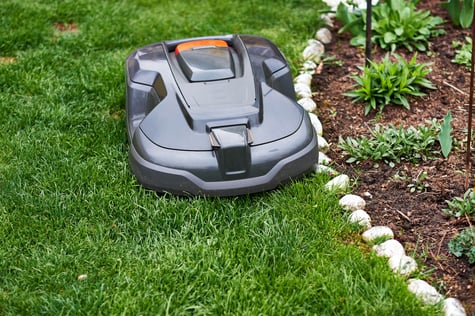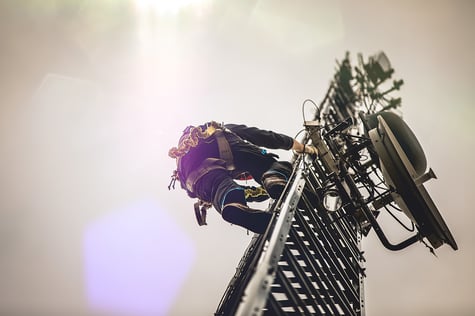By the end of 2020, more than 50 billion devices will connect via radio communications. Over the next 10 years, the proportion of these devices classified as smartphones will fall.
A wider variety of devices are joining the Internet of Things (IoT). Wireless technologies connecting remote, battery powered devices are now established. These low power wide area networks (LPWANs) can connect these sorts of devices.
But not all LPWANs are created equal. There are a number of comparable technologies, operating on both licensed and unlicensed parts of the spectrum. While this choice is good for product designers, carefully considering the options is now critical. With the right technology, LPWAN devices will be able to connect seamlessly and efficiently.
The technology powering low power wide area networks
Conventional wireless technologies are not well suited to connecting remote, battery powered devices like sensors. As sensors become more ubiquitous, the market demands more ways to connect these sensors; enabling the creation of value from this data in new ways.To continue to grow smart home and smart retail tech, as well as smart grids and industrial internet of things, we need to connect devices that are:
- Remote. In locations without traditional LTE coverage, or deep underground where signals do not penetrate far enough.
- Battery powered. Devices in this part of the market are often powered by a single battery cell. More batteries increases their cost, and connecting to the grid is not always possible.
- Less talkative. Devices in this category do not need to communicate significant amounts of data.
- Inexpensive. To achieve a world of mass sensors, the technology must make it affordable to do so.
Each of these demands places a unique wireless design challenge. This necessitates, a small, compact device that is also robust and capable of lasting for years with minimal battery power.
Theoretically, LPWAN technologies are capable of connecting any small, battery powered device for up to 10 years. This makes it perfect for remote sensors and other applications with minimal data demands, even for those positioned underground, or deep indoors.
In the last 10 years, Sigfox, LoRa, Narrowband-IoT and Weightless have become widely regarded as the leading technologies – but there are far more competing technologies emerging and establishing themselves.
Introducing the LPWAN technologies
Sigfox
| Range | 10-40 km |
| Bandwidth | 100 Hz |
| Frequency | ISM bands (unlicensed); 868 MHz in Europe, 915 MHz in North America, and 433 MHz in Asia |
| Authentication/Encryption | Unsupported |
| Standardisation | Proprietary, standardised in collaboration with ETSI |
Sigfox is the best solution for ultra-low data rate devices where the priority is extending battery life. It operates completely separately from any existing network infrastructure and therefore coverage is not entirely universal – just yet. The Sigfox company has launched Sigfox with partners in over 70 countries – including the vast majority of Western Europe and all of North America.
LoRaWAN
| Range | 5-20 km |
| Bandwidth | 250 kHz and 125 kHz |
| Frequency | 868 MHz in Europe, 915 MHz in North America, and 433 MHz in Asia |
| Authentication/Encryption | Supported (AES 128b) |
| Standardisation | LoRa-Alliance |
LoRaWAN is another technology that takes advantage of unlicensed ISM bands. In Europe, that’s 868 MHz, and 915 MHz and 433 MHz in North America and Asia respectively. Therefore, it invites comparison with Sigfox. However, LoRa uses narrowband signals over a wider bandwidth, which makes it less susceptible to interference.
Weightless
| Range | 2-10 km |
| Bandwidth | 12.5 kHz |
| Frequency | Unlicensed sub-gHz frequency bands |
| Authentication/Encryption | AES-128/256 |
| Standardisation | Open standard |
Weightless is another narrowband radio technology that enables uplink and downlink communications. One of the most attractive features of Weightless is that there is 100% fully acknowledged transmissions. Ubliik claims that the technology offers near-3GPP performance without the costs of gaining network approval, which would be necessary with a technology like Narrowband-IoT.
Narrowband-IoT
| Range | 1-10 km |
| Bandwidth | 200 kHz |
| Frequency | Licensed LTE frequency |
| Authentication/Encryption | LTE-class encryption |
| Standardisation | 3GPP |
NB-IoT utilises the licensed LTE spectrum. The standards have been ratified by the 3GPP, and the technology has been deployed widely. The technology has been built for mass distributed devices, like sensors, that are powered purely by batteries. The technology excels in deep indoors applications, with 64dB propagation in the United Kingdom (via Vodafone, the UK’s sole NB-IoT operator). It also offers a high quality of service and secure encryption.
Use cases and technology selection
LPWANs offer opportunities to connect devices that could not previously achieve connectivity. Therefore, new and existing applications could connect over these networks. Selecting the right one, however, is crucial.
Narrowband-IoT performs best in applications that are the most ‘talkative’. For example, smart grid monitors would perhaps be best served. They need to offer close-to-live connectivity, and often at high data rates. These may even be powered by non-battery sources. The deep penetration of signals also enables devices positioned deep underground to achieve connectivity.
Where a long battery life is required, Sigfox and LoRaWAN offer the most beneficial set of specifications. Take agricultural monitors and sensors, which are often outside in highly remote areas. They will prioritise battery life above other characteristics. Data may not be communicated quite so frequently, and data throughput may be minimal. LTE coverage is not always guaranteed in these remote locations.
In retail settings, LTE coverage is typical. For applications such as payment terminals, a high quality of service is necessary to ensure transactions complete. Security is another crucial factor. This combination of requirements makes Narrowband-IoT a natural choice of technology.
Weightless thrives in ultra-low throughput applications close a base station; making it ideal for industrial settings. It is cheap to deploy, making it perfect for internal pallet tracking in factories and warehouses.
Innovative antennas for LPWAN
LPWANs create a wealth of opportunity to create new categories of devices, and add connectivity to existing ‘things’. But in order to do so, the devices themselves must be able to facilitate high levels of wireless performance. This is where antennas play a vital role.
Antenova design and manufacture antennas specifically for LPWAN technologies. Antenova’s antennas are designed for integration, with features created specifically to make them easy to implement and achieve strong levels of performance. View our range of LPWAN antennas and buy samples here.
.jpg)



